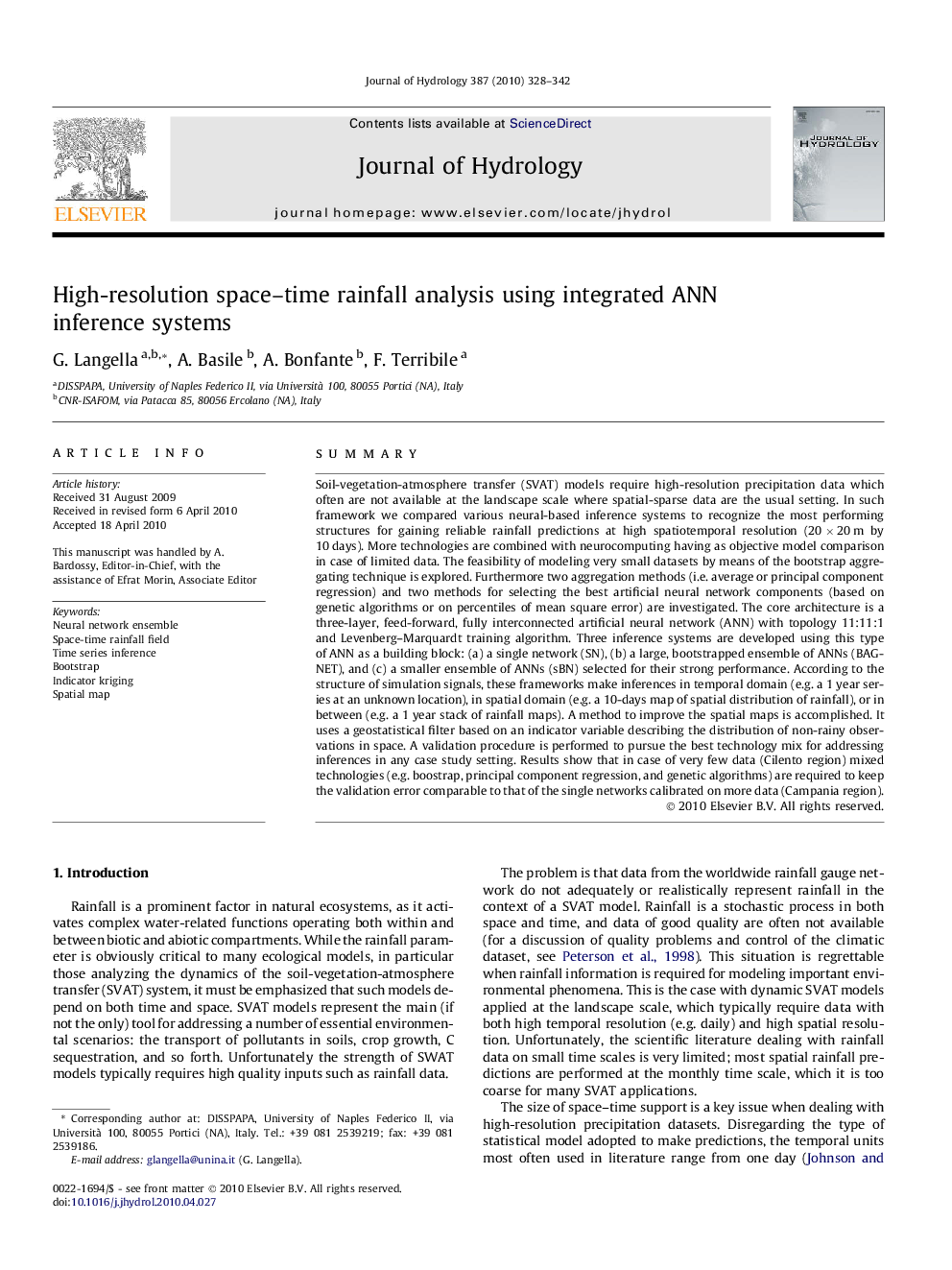| کد مقاله | کد نشریه | سال انتشار | مقاله انگلیسی | نسخه تمام متن |
|---|---|---|---|---|
| 4578284 | 1630053 | 2010 | 15 صفحه PDF | دانلود رایگان |
عنوان انگلیسی مقاله ISI
High-resolution space-time rainfall analysis using integrated ANN inference systems
دانلود مقاله + سفارش ترجمه
دانلود مقاله ISI انگلیسی
رایگان برای ایرانیان
کلمات کلیدی
موضوعات مرتبط
مهندسی و علوم پایه
علوم زمین و سیارات
فرآیندهای سطح زمین
پیش نمایش صفحه اول مقاله

چکیده انگلیسی
Soil-vegetation-atmosphere transfer (SVAT) models require high-resolution precipitation data which often are not available at the landscape scale where spatial-sparse data are the usual setting. In such framework we compared various neural-based inference systems to recognize the most performing structures for gaining reliable rainfall predictions at high spatiotemporal resolution (20Â ÃÂ 20Â m by 10Â days). More technologies are combined with neurocomputing having as objective model comparison in case of limited data. The feasibility of modeling very small datasets by means of the bootstrap aggregating technique is explored. Furthermore two aggregation methods (i.e. average or principal component regression) and two methods for selecting the best artificial neural network components (based on genetic algorithms or on percentiles of mean square error) are investigated. The core architecture is a three-layer, feed-forward, fully interconnected artificial neural network (ANN) with topology 11:11:1 and Levenberg-Marquardt training algorithm. Three inference systems are developed using this type of ANN as a building block: (a) a single network (SN), (b) a large, bootstrapped ensemble of ANNs (BAGNET), and (c) a smaller ensemble of ANNs (sBN) selected for their strong performance. According to the structure of simulation signals, these frameworks make inferences in temporal domain (e.g. a 1 year series at an unknown location), in spatial domain (e.g. a 10-days map of spatial distribution of rainfall), or in between (e.g. a 1 year stack of rainfall maps). A method to improve the spatial maps is accomplished. It uses a geostatistical filter based on an indicator variable describing the distribution of non-rainy observations in space. A validation procedure is performed to pursue the best technology mix for addressing inferences in any case study setting. Results show that in case of very few data (Cilento region) mixed technologies (e.g. boostrap, principal component regression, and genetic algorithms) are required to keep the validation error comparable to that of the single networks calibrated on more data (Campania region).
ناشر
Database: Elsevier - ScienceDirect (ساینس دایرکت)
Journal: Journal of Hydrology - Volume 387, Issues 3â4, 15 June 2010, Pages 328-342
Journal: Journal of Hydrology - Volume 387, Issues 3â4, 15 June 2010, Pages 328-342
نویسندگان
G. Langella, A. Basile, A. Bonfante, F. Terribile,